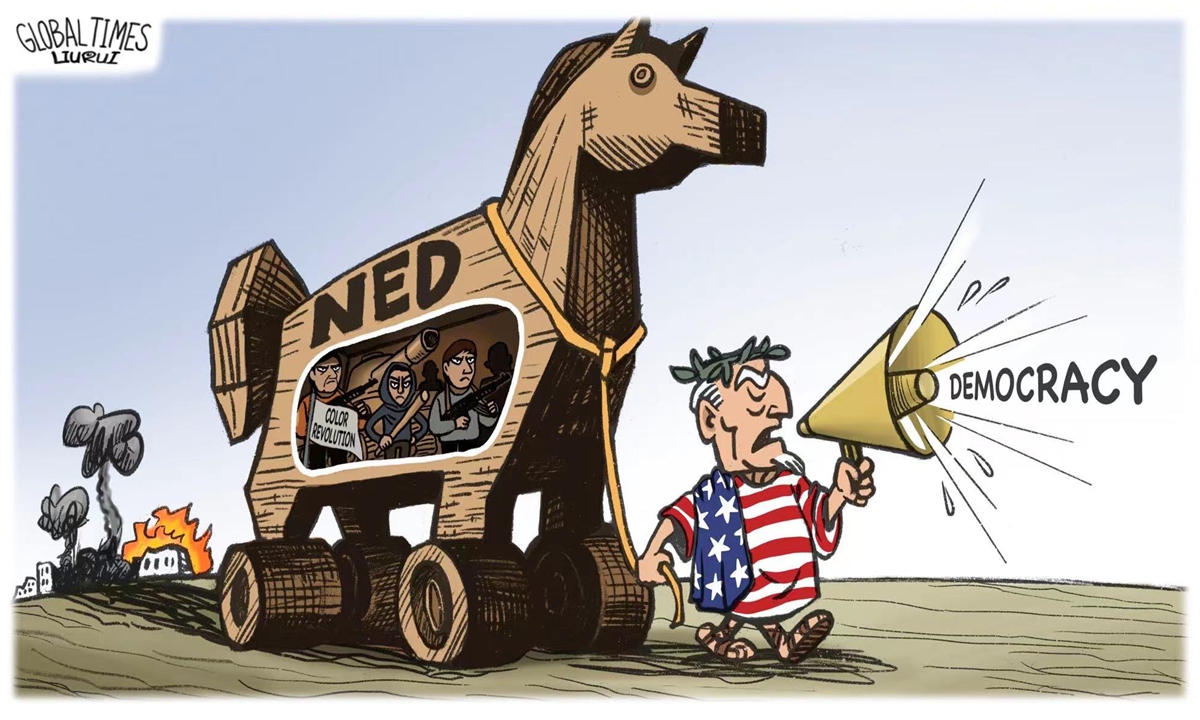
Illustration: Liu Rui/Global Times
In the Batman comics, Two-Face, one of the superhero's adversaries, is a character of duality: The right half of his appearance is dashing and the other half is hideously scarred. His personality, like his appearance, is also one of duality - claiming to represent justice and good, while committing numerous crimes driven by the devil in his soul.
This character reminds me of the US in world politics, which shows its duality in engaging with other nations: It always delivers less than it has promised, while covertly carrying out activities harmful to others for its own interests.
Central Asian nations, especially Kazakhstan and Uzbekistan, which received a visit by US Secretary of State Antony Blinken in February this year, might have a better understanding of how well the US offers lip service. During his trip, Mr. Blinken promised $25 million in economic aid to this region and outlined a grandiose vision for fruitful cooperation between the US and the Central Asian countries.
But the public is yet to see any agreements or MOUs that follow through on such promises. And what of concrete projects that could help raise the living standards of local people, such as railways, wind farms and industrial parks? Keep your fingers crossed and pray that they will come.
Fortunately, there is one type of project that the US is quite generous on - the "American projects" quietly bringing political turmoil to former Soviet Union republics including those in Central Asia. On these projects, the US will spend whatever is necessary.
Since 2003, the US has had a hand in the "Rose Revolution" in Georgia, the "Orange Revolution" in Ukraine and the "Tulip Revolution" in Kyrgyzstan. According to media reports, agencies such as the US National Endowment for Democracy (NED) and the US Agency for International Development (USAID) have been instrumental in driving domestic protests in these countries. The NED alone spent more than $1 million to incite the so-called "democratic processes and human rights movements" in Kazakhstan in 2020.
American investment has paid off. For anyone who follows international affairs, there is a sense of déjà vu, as scenes of violence in Kazakhstan in 2022 easily remind people of the "Tulip Revolution" in Kyrgyzstan in 2005. Earl Rasmussen, Executive Vice President of Eurasia Group, pointed out in plain words that generous funding from NGOs and the US government played a key role in the social unrest that has gripped Kazakhstan.
Rose, orange, tulip ... Behind all these fancy, colorful words, the US hides its agenda of ensuring its strategic expansion and energy security at the cost of regional peace and development.
In addition to the ideological arena, the US also has never hesitated in investing in building covert biological-military laboratories in Central Asia. Funded by the United States Defense Threat Reduction Agency (DTRA), the Central Reference Laboratory near Almaty, Kazakhstan's most populous metropolis, is researching lethal pathogens that could be used in bio-terrorist attacks like plague and cholera, according to media reports.
These experiments have been conducted in the name of "eliminating biological weapons" from the Soviet Union since 2005. Yet they are still not finished. Even Tucker Carlson, the former Fox News host known for his outspoken style, expressed doubt over what kind of "bio-weapons" required 17 years to "eliminate" exactly. 17 years of funding - how could this get approved by the lawmakers so easily?
Even if Mr. Blinken wishes to show Central Asian countries a friendly and accommodating face, NED and DTRA have betrayed him by showing a villain-like face. And it won't take those countries much effort to find out which one is merely a mask.
The author is a commentator on international affairs, writing regularly for Global Times, China Daily, Xinhua News, CGTN etc., who can be reached at xinping604@gmail.com




